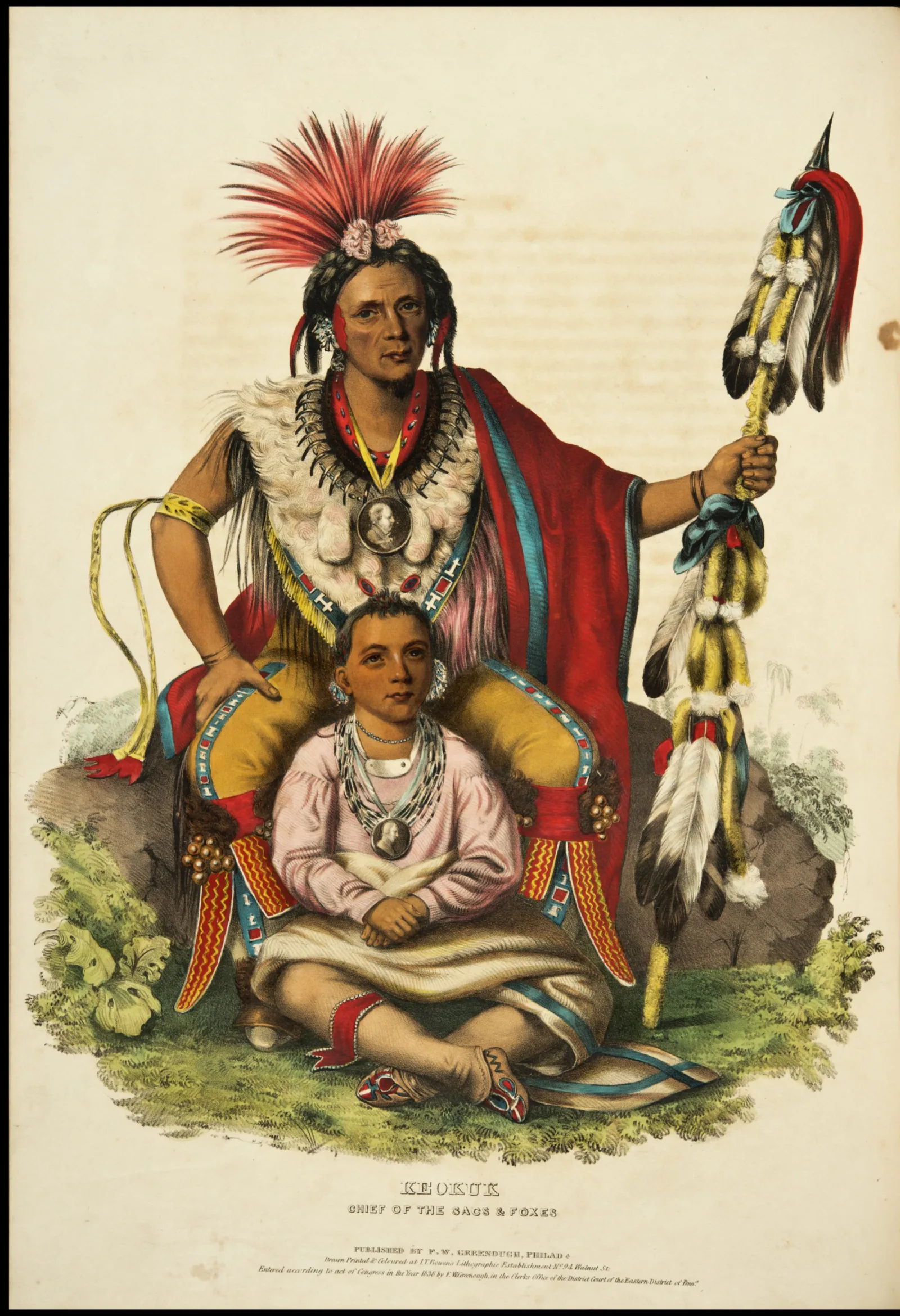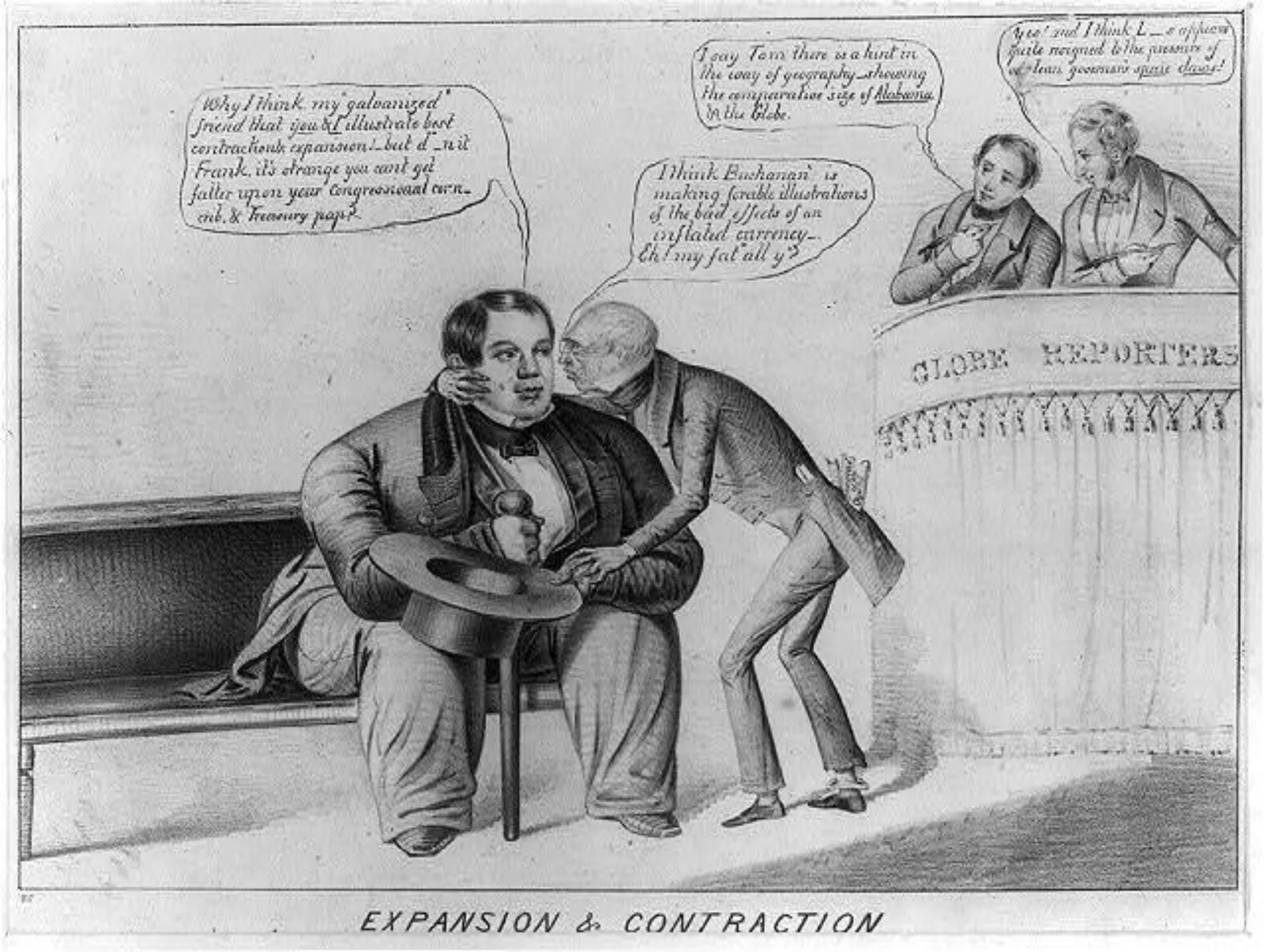Though now regarded as one of the most impressive and important illustrated works published in the United States prior to the Civil War, Thomas McKenney and James Hall’s History of the Indian Tribes of North America was in many ways a star-crossed publication. It took eight years from the publication of the first part in 1837 to the twentieth and final part in 1844. Beyond the detailed work required to lithograph and hand-color the 120 plates in the work--and to compose biographies of its Indigenous portrait subjects--one of the major reasons for this extended publication schedule was the economic crisis in the United States now called the Panic of 1837, and the subsequent economic depression—events which almost exactly coincided with the publication of the History, and which also provide a sardonic commentary on the History’s contents.
The History was sold by subscription, and many subscribers signed up for the expensive work in the mid-1830s, a boom time for the American economy. This boom was fueled by a number of factors, including high prices for cotton, harvested by enslaved African Americans in the southern states and sold to British textile mills. Notably, more than half of the subscriber list for the History were from the South.
Another factor was the real estate market, with speculators driving up the prices for lands sold by the U.S. and state governments to private investors. The Indian Removal Act of 1830, promoted and signed into law by President Andrew Jackson and drafted, in part, by McKenney, allowed the forced removal of Indigenous tribes living east of the Mississippi River (especially in southern states) to lands west of the Mississippi; other coercive and misleading treaties with Indigenous peoples in the Great Lakes region were also signed at this time. A frenzy for the lands thereby claimed to be made available for purchase by white settlers and real estate investors followed; the federal government sold over 50,000 square miles of land in 1835 and 1836 alone.

As the first issue of the History was published in February 1837 to widespread publicity and favorable reviews, the History seemed likely to become a huge financial success. But at the same time prices for cotton were plummeting, the land speculation bubble was bursting, and panicked investors made a run on unregulated banks, which could not meet the demand. The country was thrown into a depression which would last into the 1840s. Financial difficulties forced the lithography firm of Lehman and Duval to withdraw from the project in August 1837, and the publisher, Edward C. Biddle, left in November 1838. Eventually, four different publishers would issue the twenty parts, as subscribers (especially in the South) quit making payments. At least one publisher, Frederick Greenough, declared bankruptcy.
The lithographer J. T. Bowen was central to seeing the project through to completion in the 1840s, along with Hall. McKenney, the former Superintendent of Indian Affairs who had believed the project would lead to untold riches, was reduced to begging loans from associates to keep it (and himself) afloat. After the first thirteen parts were published by the end of 1838, nothing appeared in 1839 or 1840, with the final seven parts struggling to the press between 1841 and 1844. The expensive work had not made anyone’s fortune—a fitting fate for a project intertwined with the dispossession of so many of the people depicted in its pages.
About the Author
Will Hansen is Curator of Americana and Roger and Julie Baskes Vice President for Collections and Library Services at the Newberry.
